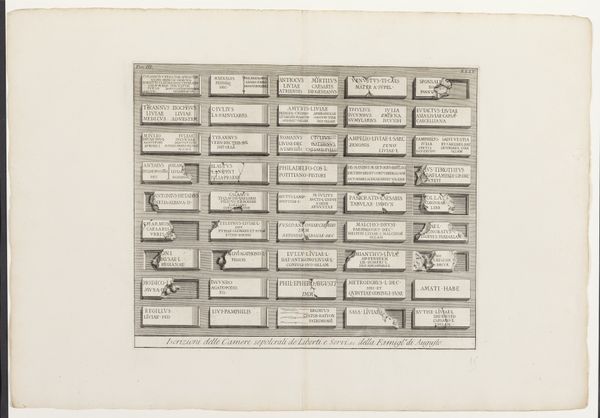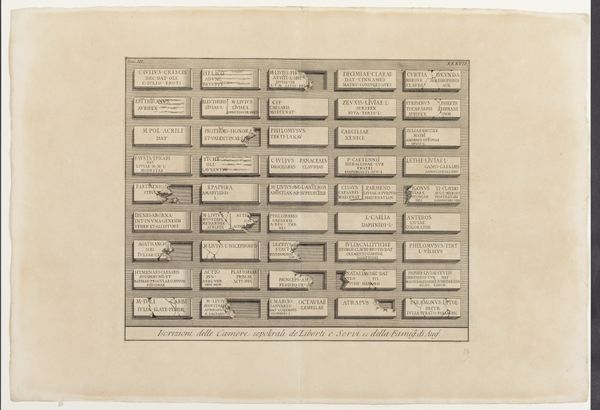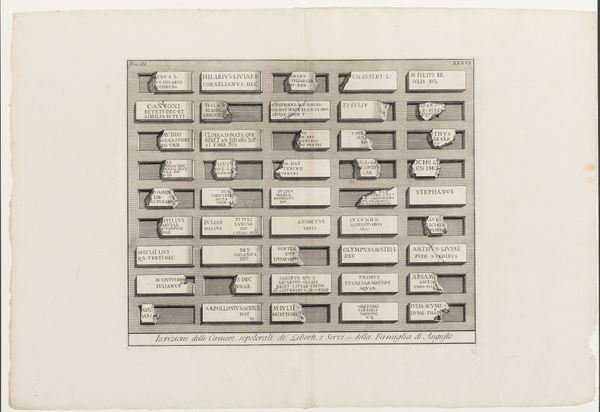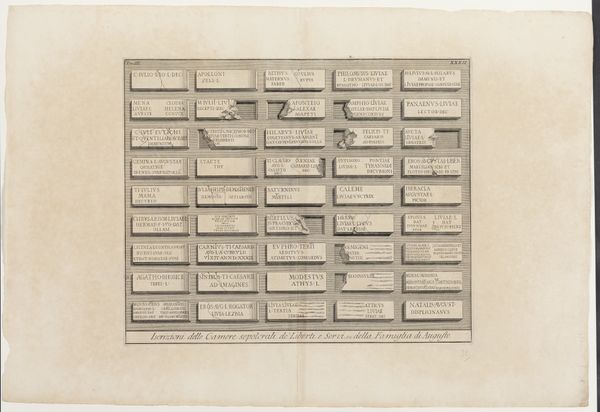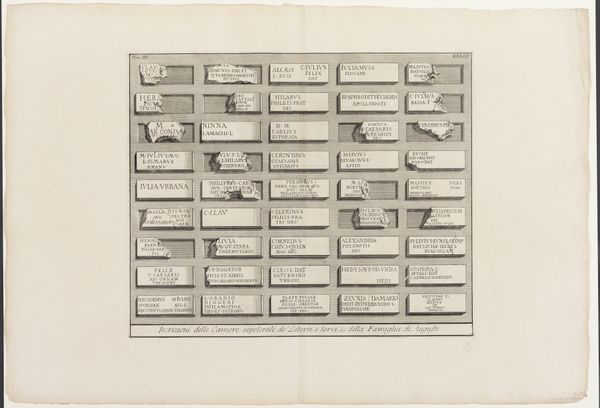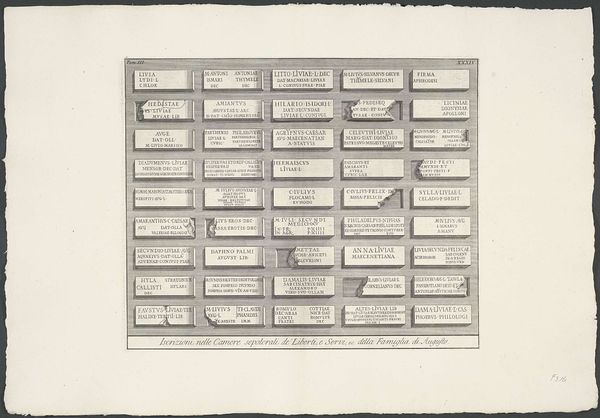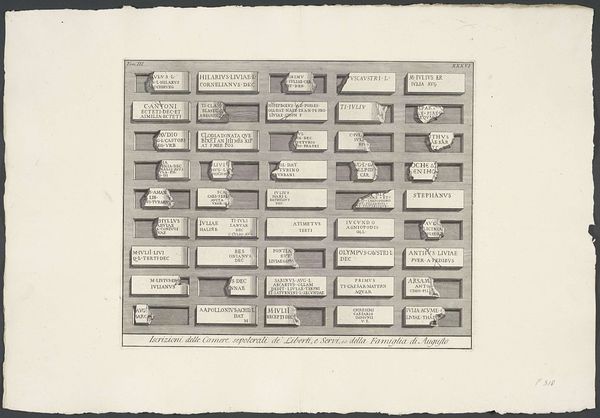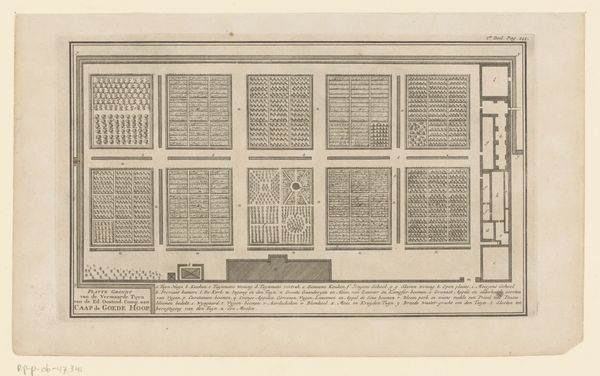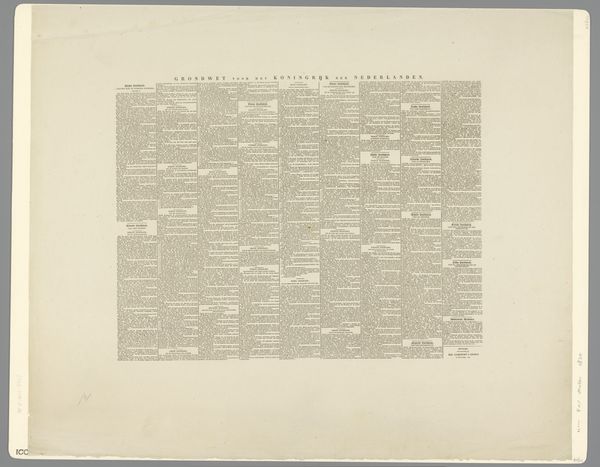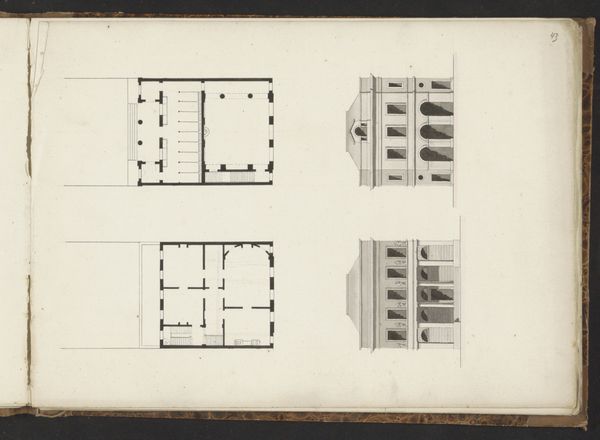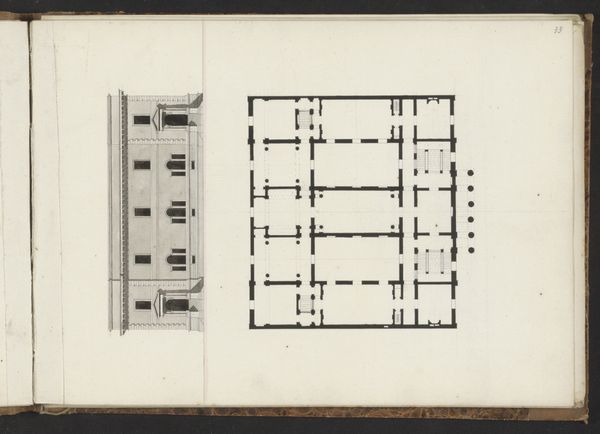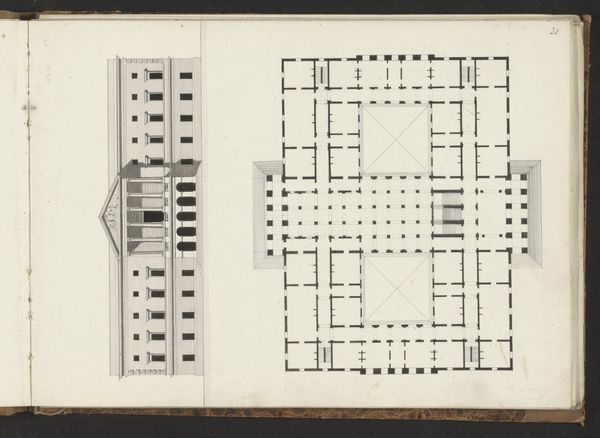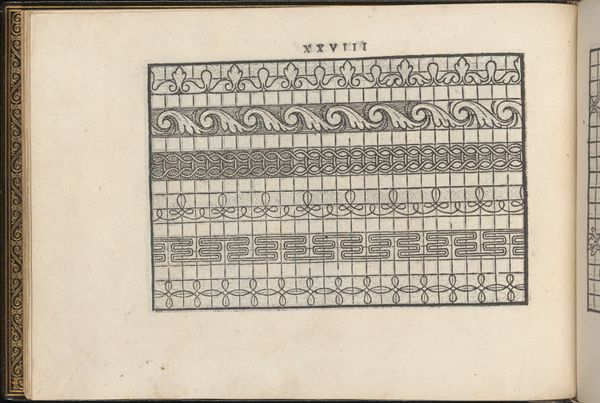
Iscrizioni delle Camere sepolcrali de' Liberti e Servi, ec. della Famiglia di Augusto, XXXIV 1756 - 1785
0:00
0:00
print, etching, textile, paper, engraving
#
ink paper printed
#
parchment
# print
#
etching
#
old engraving style
#
textile
#
paper
#
romanesque
#
ancient-mediterranean
#
history-painting
#
engraving
Dimensions: 375 mm (height) x 485 mm (width) (bladmaal)
Giovanni Battista Piranesi created this engraving, "Iscrizioni delle Camere sepolcrali de' Liberti e Servi, ec. della Famiglia di Augusto," without a known date, displaying inscriptions from the burial chambers of freedmen and servants within the family of Augustus. Piranesi, active in 18th-century Italy, was deeply interested in the socio-political dimensions of art and architecture. This piece reflects a broader cultural fascination with classical antiquity, yet it does so through a lens that includes those often excluded from grand narratives: the servants and freedmen. The very act of documenting these inscriptions invites us to consider the social hierarchies of ancient Rome. Piranesi’s work prompts questions about the power dynamics embedded in these social structures, and how these dynamics are memorialized, or not, through art and architecture. To fully understand this engraving, we might turn to archeological records, social histories of the Roman Empire, and studies of 18th-century antiquarianism. This artwork serves as a reminder that art history is inextricably linked to social and institutional contexts.
Comments
No comments
Be the first to comment and join the conversation on the ultimate creative platform.
